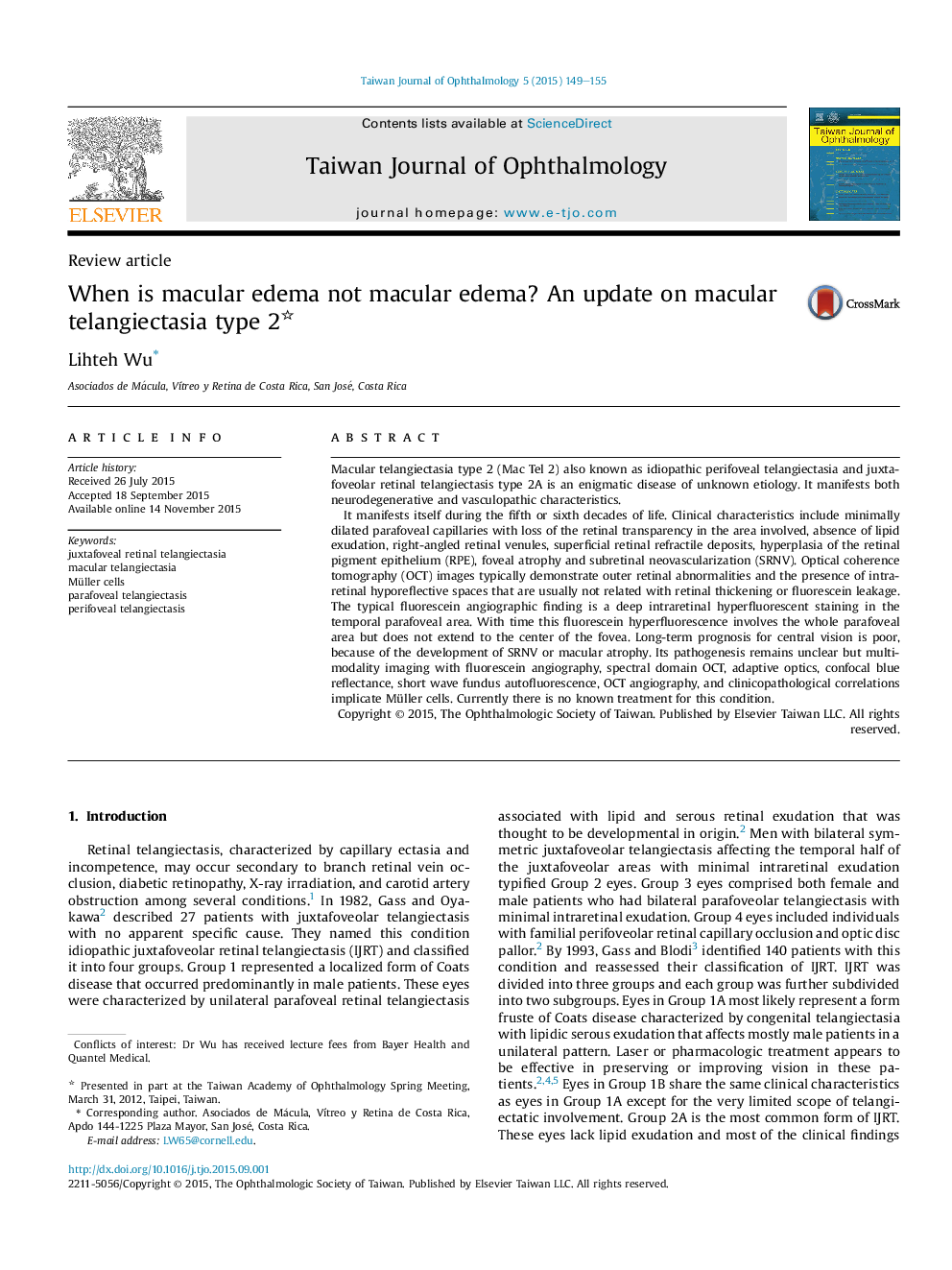| Article ID | Journal | Published Year | Pages | File Type |
|---|---|---|---|---|
| 4033333 | Taiwan Journal of Ophthalmology | 2015 | 7 Pages |
Abstract
It manifests itself during the fifth or sixth decades of life. Clinical characteristics include minimally dilated parafoveal capillaries with loss of the retinal transparency in the area involved, absence of lipid exudation, right-angled retinal venules, superficial retinal refractile deposits, hyperplasia of the retinal pigment epithelium (RPE), foveal atrophy and subretinal neovascularization (SRNV). Optical coherence tomography (OCT) images typically demonstrate outer retinal abnormalities and the presence of intraretinal hyporeflective spaces that are usually not related with retinal thickening or fluorescein leakage. The typical fluorescein angiographic finding is a deep intraretinal hyperfluorescent staining in the temporal parafoveal area. With time this fluorescein hyperfluorescence involves the whole parafoveal area but does not extend to the center of the fovea. Long-term prognosis for central vision is poor, because of the development of SRNV or macular atrophy. Its pathogenesis remains unclear but multimodality imaging with fluorescein angiography, spectral domain OCT, adaptive optics, confocal blue reflectance, short wave fundus autofluorescence, OCT angiography, and clinicopathological correlations implicate Müller cells. Currently there is no known treatment for this condition.
Keywords
Related Topics
Health Sciences
Medicine and Dentistry
Ophthalmology
Authors
Lihteh Wu,
